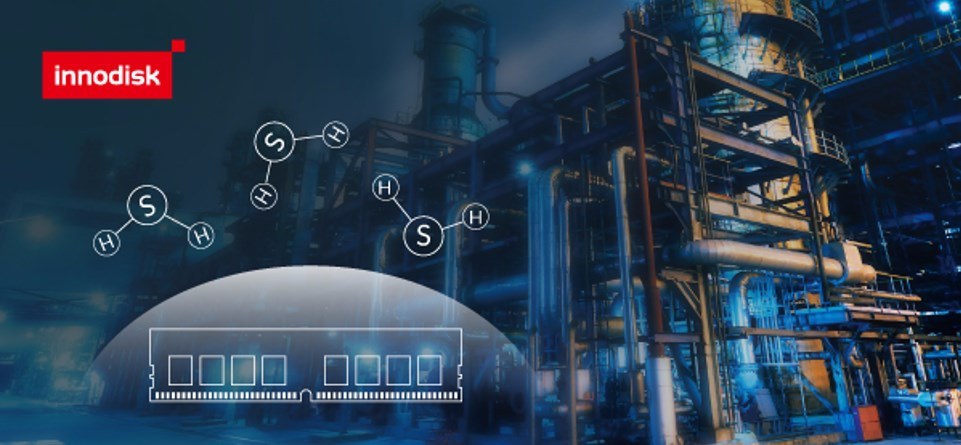Originally published on EEWeb.com on January 11, 2019.
The good news is that manufacturers of industrial and embedded DRAM have already started to implement anti-sulfuration as a standard for high-performance modules
News regarding DRAM is usually centered on pricing and market trends. As an established technology, there naturally will not be that many new innovations popping up on a regular basis, so what is the deal with anti-sulfuration?
First of all, sulfuration issues are often associated with industries handling crude oil and natural gas, power plants, and areas with volcanic activity. What is less known is that sulfuration is also found in places refining paper, processing food, and doing leather work. Heavy traffic will also cause sulfuration due to the exhaust from combustion engines.
The main culprit is hydrogen sulfide (H2S). This gas, with a foul smell of rotting eggs, will react with silver inside DRAM resistors in a corrosive reaction — the same reaction that turns your silverware black! The resulting material (silver sulfide) has a much lower conductivity than pure silver, which means that the module will fail if the resistors are exposed for too long.

Anti-sulfuration resistors shield against hydrogen-sulfide gas.
Now, this phenomenon is something that has been known for a long time, but manufacturers have not necessarily addressed it. The reasons for renewed interest are an increase in air pollution and the fact that our devices are moving into new and harsher territories. A computer is naturally much more exposed in an industrial refinery as opposed to your office.
The ways in which manufacturers solve the sulfuration issue are also different. However, these methods must all comply with the ASTM B809-95 standard; otherwise, they can’t claim the ability to protect against sulfuration. This test puts the DRAM module through what amounts to years of continued sulfur exposure, thereby ensuring that even the smallest areas of contact with any silver will lead to corrosion and module failure.
The first way of implementing anti-sulfuration is simply replacing the material. This means using a silver alloy that is more corrosion-resistant. These alloys are often more expensive and — because their conductivity characteristics differ — performance might also be affected.
The second method involves isolating the sensitive parts of the resistor. While there are still risks of corrosion, this is less expensive and has no risks to performance, which explains why this method is the most prominent among the largest manufacturers.
So what you as an operator must be aware of are the levels of sulfuration and how long your device will have to operate in the given environment. Even low levels will cause creeping sulfuration that can cause devastating system failure down the line.
The good news is that manufacturers of industrial and embedded DRAM have already started to implement anti-sulfuration as a standard for high-performance modules.
Resistors and other components are easily damaged by pollution and contaminants. As pollution levels increase, measures to combat sulfuration will become a standard in the industry along with other measures such as underfill, wide temperature, very low-profile modules (VLP), and Mini-DIMM.